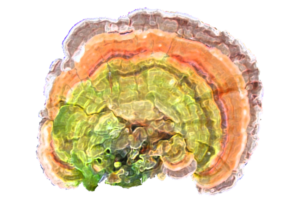C.B.S Lau, C.Y Hoa, C.F Kima, K.N Leungb, K.P Fungb, T.F Tsec, H.H.L Chanc, M.S.S Chow
Abstract
Coriolus versicolor (CV), also known as Yunzhi, is one of the commonly used Chinese medicinal herbs. Although recent studies have demonstrated its antitumour activities on cancer cells in vitro and in vivo, the exact mechanism is not fully elucidated. Hence, the objective of this study was to examine the in vitro cytotoxic activities of a standardized aqueous ethanol extract prepared from Coriolus versicolor on a B-cell lymphoma (Raji) and two human promyelocytic leukemia (HL-60, NB-4) cell lines using a MTT cytotoxicity assay, and to test whether the mechanism involves induction of apoptosis. Cell death ELISA was employed to quantify the nucleosome production resulting from nuclear DNA fragmentation during apoptosis. The present results demonstrated that CV extract at 50 to 800 μg/ml dose-dependently suppressed the proliferation of Raji, NB-4, and HL-60 cells by more than 90% (p < 0.01), with ascending order of IC50 values: HL-60 (147.3 ± 15.2 μg/ml), Raji (253.8 ± 60.7 μg/ml) and NB-4 (269.3 ± 12.4 μg/ml). The extract however did not exert any significant cytotoxic effect on normal liver cell line WRL (IC50 > 800 μg/ml) when compared with a chemotherapeutic anticancer drug, mitomycin C (MMC), confirming the tumour-selective cytotoxicity. Nucleosome productions in HL-60, NB-4 and Raji cells were significantly increased by 3.6-, 3.6- and 5.6-fold respectively upon the treatment of CV extract, while no significant nucleosome production was detected in extract-treated WRL cells. The CV extract was found to selectively and dose-dependently inhibit the proliferation of lymphoma and leukemic cells possibly via an apoptosis-dependent pathway.
Copyright © 2004 Elsevier Inc. All rights reserved.

